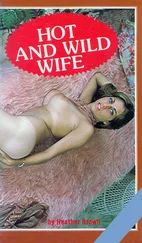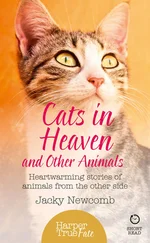1 ...8 9 10 12 13 14 ...20 Zoo dentistry includes many and varied species. New technologies are now beginning to be seen, or at least contemplated, in the treatment of some of the large species. If we consider, for example, that an elephant tusk is an upper lateral incisor, with pulp tissue and an open apex, then we can pursue the possibility of endodontic therapy for affected tusks rather than the very difficult procedure of tusk extraction.
Avian species primarily present with lost or fractured beak segments or beak malocclusion resulting from poor nutrition. Replacement of lost beak segments can be performed with dental acrylic, threaded pins, ligature wire and cyanoacrylate. Congenital or traumatic malocclusion or “cross beak” is not uncommon, especially in psittacine birds. Active rubber orthodontic ligatures and threaded pin anchors can sometimes effectively correct this form of malocclusion. Like birds, the most common dental problem seen in reptiles is oral trauma, and the same principles of repair as employed in avian dentistry can be utilized. For example, turtles, can present with “beak” fracture. Dental acrylics, threaded wire, and cyanoacrylate can rehabilitate these animals. Though not a dental procedure, the repair of fractured turtle shells with dental materials is also a commonly successful and practical procedure.
An excellent example of advanced pathology with limited therapy and success is seen in mandibular and maxillary abscesses in herbivores and ruminants. Their dentition is primarily selenodont, which has parallel rows of crescent‐shaped occlusal ridges that run in a mesial to distal direction. Selenodont dentition is the principal dental form in the order Artiodactyla, which includes most sheep, cattle, antelope, deer, camels, boars, and hogs. However, the animals most affected with mandibular/maxillary abscesses are the Marsupialia, primarily kangaroos and wallabies. Their molar form is a rather primitive tribosphenic form – that is, having three basic cusps. They are the protocone (the lingual cusp of the upper molar – it is generally narrow), the metacone (the posterior buccal cusp), and the paracone (the anterior buccal cusp). There are accessory cusps on metacone and paracone, termed metaconule and paraconule. These accessory cusps, such as the metaconule, are very important in Artiodactyle masticatory function.
The principal dental morphological difference between marsupials and placental species is the relative shape of the external part of the molar. The other dental form found in common herbivores is lophodont dentition. Lophodont dentition has parallel ridges that course across the entire coronal width from lateral to medial. Lophodont dentition is found in the order Perrisodactyla, as well as the families Tapiridae and Rhinocerotidae (the tapir and the rhinoceros).
It is impractical, though possible, to develop successful techniques for orthodontics, restoratives, crown coverage, and possibly bridge procedures in wildlife dentistry, but many oncology cases present unique therapeutic challenges that can be managed with diagnostic and therapeutic help of oncology specialists.
Most forms of periodontal disease seen in domestic animals can be found in exotic animals, with treatment similar to that performed in humans. Primates display periodontal disease very similar to humans. Extensive periodontitis with advanced tooth‐supporting bone loss can also be severe in non‐primates, especially so in orangutans, where it is accompanied with the usual symptoms of bacterial infection and general malaise. Periodontal therapy is diverse, ranging from simple prophylaxis to advanced surgical gingival flap procedures with bone augmentation, lateral sliding flaps, and advanced procedures that also include surgical exodontia. Cases of gingival hyperplasia can be treated with either electro‐surgery or sharp dissection.
Many of the anatomical peculiarities and proposed treatments in this book may not be found elsewhere in print, as they are the result of an accumulation of 50 years of personal hands‐on treatment and personal experience while working on thousands of animals among hundreds of species. We still have much to learn, and with dedication we will continue to improve our ability to help the many species that cannot help themselves as we provide better oral health, comfort and increased longevity in animals worldwide. This book provides a foundation of information. We hope that future contributors will add to this information in an ever‐expanding source of information that will serve to help improve and maintain improved oral health in the many species of animals throughout the world.
Finally, due to the constraints of length within the Table of Contents, it has not been possible to list the most common (but not inexhaustible) 352 species found in animal sanctuaries and zoos throughout the world. However, these are listed in the index and should be easily identifiable, helping all readers to identify the myriad of animals they may be called upon to examine and treat.
Peter P. Emily, DDS, Certification Periodontics, Endodontics, and Oral Surgery, Hon. Diplomate American Veterinary Dental College
Part I A History of Veterinary Dentistry and of Teeth, and Dental Therapy of Wild Animals
1 History of Veterinary Dentistry, Including Development of Oral and Dental Treatment of Wild and Zoo, Safari Park and Refuge Animals
Colin E. Harvey
Surgery and Dentistry School of Veterinary Medicine, University of Pennsylvania, Philadelphia, PA, USA
This review is limited to a narrow definition of dentistry – conditions affecting the teeth, periodontium and jaws, and treatment of these structures. Mention of the major infectious oral diseases that affect wild, as well as domestic herbivores, such as viral stomatitis for example, are not included.
Veterinary dental history can be considered as having two major periods, the first in which the horse was the focus of most attention, because of its importance for transportation, mechanical power, military use and sport. The jaws and teeth were important because bits are used to control speed and direction of motion in horses. The internal combustion engine was invented in the mid‐1850s; by the early 1990s, this form of transportation and mechanical power was rapidly displacing the horse and, as a result, equine dentistry no longer has the critical societal importance it once had.
The second period is ongoing, and is largely based on application of human dental procedures to pet domestic animals. As experience with these procedures, initially in dogs, grew, they started to be applied to non‐domesticated species by a pioneering group of human dentists and veterinarians. Experience with dental treatment of food animals is largely limited to management of tooth loss in sheep.
We only have a very incomplete glimpse of what was known about animal dentistry in the ancient world, because much of the records have been lost. The fire in the largest library of the ancient world, at Alexandria in 48 BCE, was catastrophic – 700 000 volumes were lost.
The ancient Greeks produced several important veterinary manuscripts, such as “The Veterinary Art, Inspection of Horses,” by Simon of Athens (430 BCE), which includes an accurate description of eruption times and aging of horses by examination of the teeth. Aristotle's “History of Animals'” (333 BCE) also includes a section on aging by teeth of horses, and comments on periodontal diseases in horses.
The Roman Empire produced some practical veterinary material, though much of it was copied from Greek sources. Around 400 CE, Chiron wrote a series of books on animals; Book VI includes material on tumors of the jaw, diseases of the teeth and management of fractured jaws, and Book VIII includes a description of the dentition. “The Veterinary Art” by Vegetius (450–500 CE) is the major Roman veterinary contribution; it describes use of splints for managing broken jaws, and aging of horses by teeth; this manuscript was translated and printed as a book one thousand years later, in 1528 – one of the first veterinary books printed.
Читать дальше











